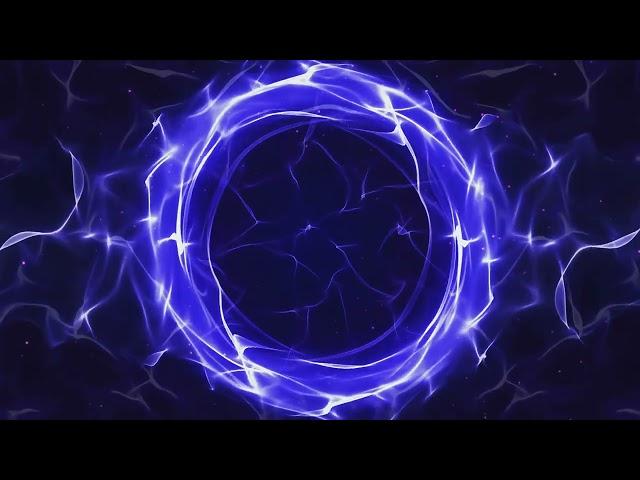
Is Hypergraph the Secret to Decoding the Universe?
The Universe as a Computational Framework: Exploring Wolfram's Hypergraph Model
Introduction to Computational Universe Theory
In contemporary theoretical physics and computational science, one intriguing idea is that the universe itself might fundamentally operate like a vast, intricate computer. This perspective, popularized by Stephen Wolfram, proposes that all the phenomena we observe are the outcomes of underlying computational processes. At the heart of this perspective is the notion of the universe not just being describable by mathematics, but being inherently mathematical, where every event, every particle, and every interaction follows computational rules.
Wolfram's Hypergraph and the Architecture of Space-Time
Central to Wolfram's model is the concept of a hypergraph. A hypergraph generalizes traditional graphs; it consists of nodes (or vertices) connected by edges, where each edge can connect more than two nodes. This allows for a richer representation of relationships and interactions than simple pair-wise connections.
In Wolfram's theory, this hypergraph dynamically evolves according to specific rules. Each node represents a discrete element of space, and the edges represent the fundamental relations between these elements. As computational rules are applied, the hypergraph is rewritten—simulating changes in the fabric of space-time itself. This constant rewriting mirrors the progression of time and the evolution of the universe. The evolving hypergraph is not just a model of the universe's structure but is posited to be the underlying reality of the universe.
The Speed of Light as a Computational Limit
An intriguing aspect of this model is its handling of the speed of light. Traditionally, the speed of light is the utmost speed at which information and matter can travel through space-time, a limit established by Einstein's theory of relativity. In Wolfram's computational universe, this speed is not only a physical boundary but also a computational one.
This implies that the speed of light represents the maximum rate at which information can be processed and propagated through the hypergraph. Just as information in a traditional computer travels from one component to another at a finite speed, so too does information in the hypergraph of the universe. This places a fundamental limit on how quickly changes (computations) can occur and spread, aligning the physical with the computational and suggesting a deep interlinkage between physical laws and computational processes.
Philosophical and Scientific Implications
The idea that the universe is fundamentally a computational entity has profound philosophical and scientific implications. It suggests a new way of understanding everything from the quantum scale to the cosmological, integrating information theory, physics, and computer science in a unified framework. This model could potentially offer insights into unsolved problems in physics, including the nature of quantum gravity and the unification of general relativity with quantum mechanics.
Moreover, if the universe is indeed computational, this could lead to philosophical questions about determinism, free will, and the nature of reality itself. Are all future events pre-determined by the initial conditions and computational rules of the hypergraph? What does this mean for our understanding of causality and choice?
Stephen Wolfram's hypergraph model of the universe as a computational structure provides a novel framework that bridges multiple disciplines. By proposing that the speed of light is a computational limit, it offers a fresh perspective on one of the fundamental constants of nature. As theoretical and computational tools develop, testing and refining such models will continue to challenge and expand our understanding of the cosmos.
This exploration of the universe through computational lenses not only deepens our grasp of the physical but also invites us to rethink the philosophical underpinnings of reality. As we advance, the intersection of computation and physics promises to be a fertile ground for discoveries that could reshape our conception of the universe.
Introduction to Computational Universe Theory
In contemporary theoretical physics and computational science, one intriguing idea is that the universe itself might fundamentally operate like a vast, intricate computer. This perspective, popularized by Stephen Wolfram, proposes that all the phenomena we observe are the outcomes of underlying computational processes. At the heart of this perspective is the notion of the universe not just being describable by mathematics, but being inherently mathematical, where every event, every particle, and every interaction follows computational rules.
Wolfram's Hypergraph and the Architecture of Space-Time
Central to Wolfram's model is the concept of a hypergraph. A hypergraph generalizes traditional graphs; it consists of nodes (or vertices) connected by edges, where each edge can connect more than two nodes. This allows for a richer representation of relationships and interactions than simple pair-wise connections.
In Wolfram's theory, this hypergraph dynamically evolves according to specific rules. Each node represents a discrete element of space, and the edges represent the fundamental relations between these elements. As computational rules are applied, the hypergraph is rewritten—simulating changes in the fabric of space-time itself. This constant rewriting mirrors the progression of time and the evolution of the universe. The evolving hypergraph is not just a model of the universe's structure but is posited to be the underlying reality of the universe.
The Speed of Light as a Computational Limit
An intriguing aspect of this model is its handling of the speed of light. Traditionally, the speed of light is the utmost speed at which information and matter can travel through space-time, a limit established by Einstein's theory of relativity. In Wolfram's computational universe, this speed is not only a physical boundary but also a computational one.
This implies that the speed of light represents the maximum rate at which information can be processed and propagated through the hypergraph. Just as information in a traditional computer travels from one component to another at a finite speed, so too does information in the hypergraph of the universe. This places a fundamental limit on how quickly changes (computations) can occur and spread, aligning the physical with the computational and suggesting a deep interlinkage between physical laws and computational processes.
Philosophical and Scientific Implications
The idea that the universe is fundamentally a computational entity has profound philosophical and scientific implications. It suggests a new way of understanding everything from the quantum scale to the cosmological, integrating information theory, physics, and computer science in a unified framework. This model could potentially offer insights into unsolved problems in physics, including the nature of quantum gravity and the unification of general relativity with quantum mechanics.
Moreover, if the universe is indeed computational, this could lead to philosophical questions about determinism, free will, and the nature of reality itself. Are all future events pre-determined by the initial conditions and computational rules of the hypergraph? What does this mean for our understanding of causality and choice?
Stephen Wolfram's hypergraph model of the universe as a computational structure provides a novel framework that bridges multiple disciplines. By proposing that the speed of light is a computational limit, it offers a fresh perspective on one of the fundamental constants of nature. As theoretical and computational tools develop, testing and refining such models will continue to challenge and expand our understanding of the cosmos.
This exploration of the universe through computational lenses not only deepens our grasp of the physical but also invites us to rethink the philosophical underpinnings of reality. As we advance, the intersection of computation and physics promises to be a fertile ground for discoveries that could reshape our conception of the universe.
Тэги:
#Space #Philosophy #Artificial_Intelligence #Quantum_Physics #Consciousness #Quantum_Computing #Universe #Science #Cosmos #Big_Bang #Simulation_Theory #Astronomy #Multiverse #Technology #Reality #Computer #Truth #Mind #Revealed #Mind-BlowingКомментарии:
Is Hypergraph the Secret to Decoding the Universe?
Lone Pen Studio
Hurrem La Sultana Capitulo 137 (Versión Larga)
Hurrem La Sultana
TubeBuddy Tutorial 2020 - The Tool That Helped Me Reach 4000+ Subs On YouTube!
F&H Tech Tutorials!
Что такое прикладная наука 1/5 | Физиологический уровень | Олег Мальцев
Академия прикладных наук
СТИНТ СМОТРИТ: Что не так с едой в США
Cybrix Нарезки Стинта










![Kim Petras - Alone 3.0 [EUROPOP] (feat. Nicki Minaj) (LYOKO EDIT) Kim Petras - Alone 3.0 [EUROPOP] (feat. Nicki Minaj) (LYOKO EDIT)](https://invideo.cc/img/upload/d0F2U2RIemd4TnI.jpg)
![Tracks from scratch - Trance/Progressive/House - Livestream [FL 20 / Reason 11] Tracks from scratch - Trance/Progressive/House - Livestream [FL 20 / Reason 11]](https://invideo.cc/img/upload/czFPYVlTLThlRFo.jpg)














